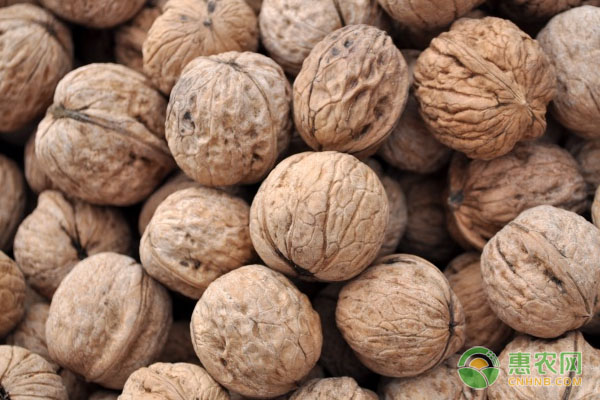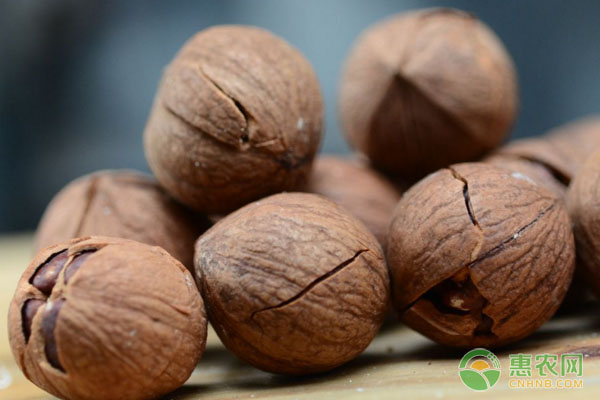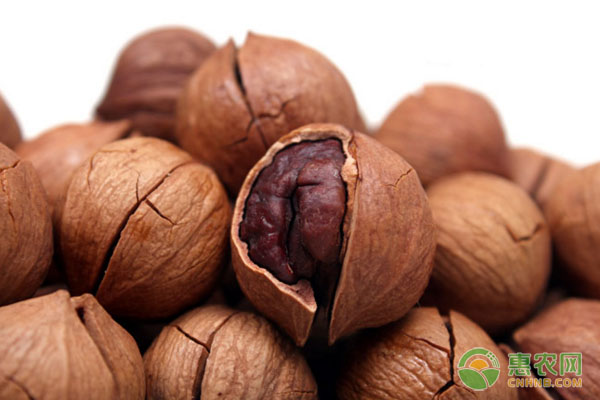Construction Technology and Pest Control Measures of Walnut High Yield Garden in Hanzhong City
Hanzhong City is located in the Qinba Mountain Area. It is a semi-temperate climate zone in the north subtropical zone. The annual average temperature is about 14.2 °C and the annual precipitation is 813.9 mm. Good climatic conditions and abundant land resources provide favorable conditions for the development of the walnut industry, but Hanzhong Regional walnut production is now facing many problems such as aging varieties, low yields, serious pests and diseases, etc. Therefore, efforts to develop walnut cultivation are important measures for forestry industrialization in Hanzhong City. 1 variety selection Walnuts should be selected to have the characteristics of strong adaptability, cold resistance and drought resistance, high fruit rate and fruit setting rate, continuous high yield, no cracking, full nucleus filling, high kernel yield, good commercial quality and strong disease resistance. Common traditional fine varieties such as Xiangling, Luguang, Liaohe No. 4 and Shaanxi Nuclear No. 5 meet the requirements. 2 Building and planting Although the walnut has strong adaptability to the soil, its root system is deep and the resistance is weak. Therefore, when planting, it is necessary to select the slightly acidic and neutral soil with more than 50 cm of soil, fertile and loose, and the southward slope when the mountain is built. Good, and do the appropriate irrigation and drainage facilities. The garden should be dwarfed and planted with a planting density of 3 m × 3 m (1 110 plants/hm 2 ). There are two kinds of spring planting and autumn planting in the planting period of walnut. The autumn planting is suitable for the spring drought area in the north, while the Hanzhong area is mostly planted in spring. Before planting, digging a large hole, layering the topsoil and farmyard manure into the bottom of the pit, then placing the roots of the seedlings into the planting hole, and covering the soil with a fixed amount of root water. 3 Management after the establishment of the park Each year, combined with the application of bottom fertilizer, the soil is deep-turned and the soil is matured. The soil should be dug once a year to keep the soil of the walnut garden loose, spring before the germination, and summer and autumn after the rain. Because of the slow growth of walnut saplings, it is possible to make soy crops such as soybeans between rows of land. Fertilization is an important measure to ensure the robust growth of walnut trees and achieve high yield. The fertilization of walnut young trees should be based on nitrogen fertilizer, and at the same time, the application of farmyard manure should increase the soil permeability. Generally, the annual application of nitrogen fertilizer 50 g/plant, compound fertilizer 30 g/plant, and farmyard manure 5 kg/plant. The adult tree is fertilized twice a year after fruit hanging. The first time before germination, the farmer's fertilizer is 45 t/hm 2 and the compound fertilizer is 1 500 kg/hm 2 . The second application in the hard core period of walnut in June or July can be applied with organic fertilizer 30 t/hm 2 , diammonium phosphate 750 kg/hm 2 and potassium fertilizer 300 kg/hm 2 . During the fruiting period, the amount of farmyard manure should be increased according to the amount of walnut production. 4 plastic trim After the autumn walnuts are harvested, the walnut trees are trimmed before the leaves are yellowed. Do not trim them after 1 month of defoliation or before the germination of the walnuts, because this time is the peak of the walnut wound, the wound after pruning The healing effect is poor. 4.1 sapling period The tree shape of the young tree can be divided into a sparse layer shape and a happy shape. If the target is a trunk-shaped tree with 1 trunk and 1 center stem, you can use a sparse layer. When trimming, divide the walnut tree into 3 layers with a layer-to-layer spacing of about 60 cm; if the target tree trunk is If it is not obvious, you can use the happy shape. When trimming, go to the top of the walnut tree center, select 4~5 branches with good growth, and the distance between the side branches is 60 cm. 4.2 Fruiting period After the walnut enters the fruiting stage in adulthood, the crown is close to the canopy or has been closed. At this time, the contradiction between growth and the result is easy to occur. Therefore, it is necessary to improve the ventilation and light transmission conditions in the crown by pruning to achieve the goal of high yield and stable production. When pruning, cut off the branches of the diseased insects, shrink the long branches of the outer branches, and promote the branches of the inner sputum; cultivate a good branch group, and properly arrange the large, medium and small branches, and make good use of the auxiliary branches and long branches, and the long branches in the walnuts. The initial fruit period is short and can be converted into a branch group during the fruiting period. 5 artificial assisted pollination At the beginning of the walnut fruit, the walnut tree often only opens the female flower, and the male flower cannot open normally, so it is necessary to carry out auxiliary pollination on the walnut tree. In the orchard, a bee colony (density of 30,000 to 40,000 / hm 2 ) is placed, and the beehives are placed in the garden before the walnut trees are flowered. 3-4 days before the pollination is prepared, the mature and freshly scattered male inflorescences are collected from the robust trees and dried for use. When the head of the female flower is cracked and the inverted "eight" shape is opened, and the inner feathery protrusion secretes a large amount of mucus, that is, the early flowering stage of the walnut, the pollination effect is best during this time, and can be formulated into a 1:5 000 pollen aqueous suspension. Spray pollination. 6 pest control 6.1 Main diseases 6.1.1 Walnut anthracnose: Hazard: The main damage to the fruit, when the fruit produces dark brown sag or disease spots, in severe cases, the whole fruit will rot and shrink and fall off; Prevention measures: remove the diseased fruit, combine the pruning and removing the diseased tip; strengthen the summer Trim work to improve ventilation and light transmission conditions in the garden; spray 25% carbendazim WP 250 times solution or 70% methyl thiophanate WP 800 times solution in early July. 6.1.2 Walnut powdery mildew: Hazard: It mainly harms the leaf bud of walnut, and the obvious leafy thin layer of white powder appears in the damaged leaves; prevention and control measures: spraying 50% benomyl WP 500 times liquid in the early stage of the disease prevention; Leaves, diseased branches, strengthen management; control the amount of nitrogen fertilizer, enhance tree potential and disease resistance. 6.1.3 Walnut black spot: Hazard: The disease mainly harms walnut shoots, leaves and young fruits. When it is serious, it will cause fruit to fall early. Control measures: spray 70% before flowering, after flowering and early in early fruit. Methyl thiophanate WP 1 000 times solution. 6.2 Main pests 6.2.1 Walnut lifted moth: Hazard: The larva damages the walnut fruit, the black skin of the victim is blackened, causing early fruit drop; prevention measures: in June-July, spraying fenvalerate 2000 times liquid every 15 days; The diseased fruit was removed in time before August and concentrated. The toxic soil was made by using 25% phoxim microcapsules 3 000 times before the emergence of the adult feathers, and they were all sprinkled on the tree tray. 6.2.2 Walnut wood è – è – å±å®³ å±å®³ å±å®³ å±å®³ å±å®³ å±å®³ å±å®³ å±å®³ å±å®³ å±å®³ å±å®³ å±å®³ å±å®³ å±å®³ å±å®³ å±å®³ å±å®³ å±å®³ å±å®³ å±å®³ å±å®³ å±å®³ å±å®³ å±å®³ å±å®³ å±å®³ å±å®³ å±å®³ å±å®³ å±å®³ å±å®³ å±å®³ å±å®³ å±å®³ å±å®³ å±å®³ å±å®³ å±å®³ å±å®³ å±å®³ å±å®³ å±å®³ å±å®³ å±å®³ å±å®³ å±å®³ å±å®³ å±å®³ å±å®³Covering the mulch film to prevent adult worms from being unearthed; installing black light during adult emergence to trap adult worms; spraying 20% ​​butyl thiocarbamate 1 500-2 000 times liquid or cypermethrin 3,000 times liquid in July larvae . Chaga Mushroom Extract,Edible Fungus Extract,Mushroom Extract,best chaga mushroom extract,inonotus obliquus extract Shaanxi Zhongyi Kangjian Biotechnology Co.,Ltd , https://www.zyplantextract.com

